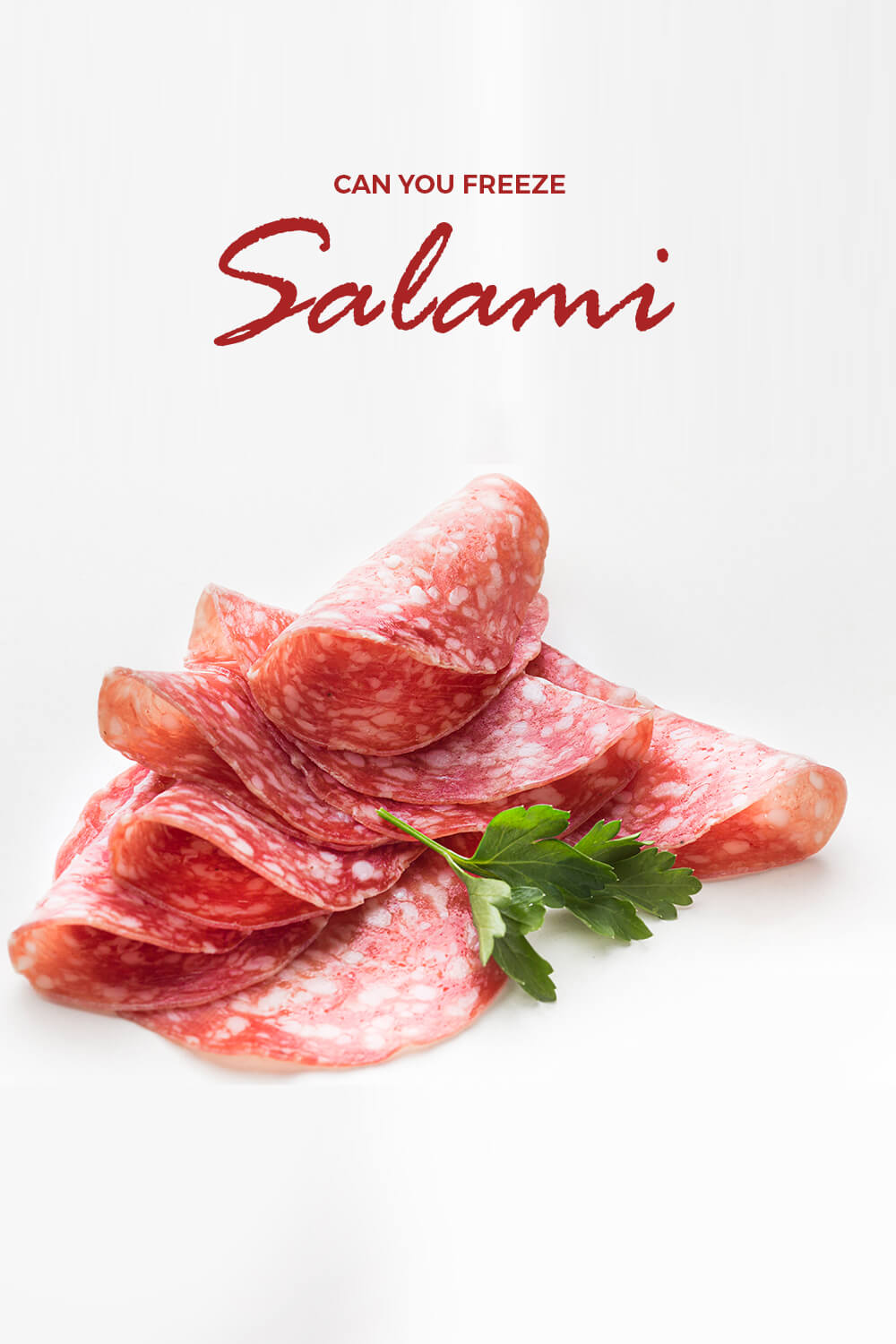Can You Freeze Salami? Find Out and More (Updated 2025)

Are you curious about if you can freeze salami? Stick around as we will share the answer and provide tips…
Salami is truly versatile meat, making a great sandwich filler, pizza topping, added flavor for salads, and much more. It’s a gourmet food that anyone can enjoy, requiring no heating or cooking. It’s safe for consumption up to a specific period when the meat starts to deteriorate. Nonetheless, you can safely eat salami sold in supermarkets raw.
Most European countries have their own traditional varieties of salami, consisting of different curing processes. They treat the meat with a host of spices and herbs to give it a flavorful taste and extend its shelf life.
Wondering if it’s safe to freeze salami? Let’s find out the proper ways to store this cured meat and prepare the most delicious dishes.
What Is Salami?
Salami or salami in Italian started out as an Italian tradition and referred to any sort of encased meat. The Latin origin, salami, describes salted meat, instead of a particular dried and cured meat.
As mentioned, there are many types of salami that indicate the spices used and curing processes. However, salami as a general term refers simply to Italian sausage.
Some of the most well-known salami include cacciatore, capicola or capocollo, Genoa salami, Lardo, Napoletano, pancetta, prosciutto, and soppressata. The differences include the meat used, herbs, spices, and curing processes.
The cacciatore, for instance, is made with ground pork seasoned with herbs and spices for flavor. They are smaller than the rest, and usually portable to be used as food on the go.
Some of these types are cured and seasoned with wine, white or red. Depending on the origin, the spices and herbs used differ per region.
The white spots that appear on the meat come from white fat, which you can see when sliced. Common seasonings include salt, mace, garlic, black pepper, wine, and cinnamon.
Salami Preparation
The dry-cured salami seen hanging on hooks needs no preparation. You can safely consume them as-is, usually tossed inside a sandwich. They have quite a long shelf life thanks to the preservatives used, antioxidants, and low water activity. However, you will find one type of salami that requires heating and cooking even after curing.
The Piedmont region in Italy produces this kind of salami called salami Cotto. The taste and flavor stand out when cooked. Hence, you need to cook it only for taste purposes rather than nutritional or safety reasons.
Because cured salami has fermented and dried, it is safe for consumption. The curing process eliminates undesirable bacteria, and drying helps remove excess moisture from the meat extending its shelf life.
Can You Freeze Salami?
So, is it okay to freeze salami? Freezing salami is the best way to extend its shelf life. Just like other meat, you must store salami at temperatures below 4 degrees Celsius to delay the growth of bacteria.
The fat must be fully frozen, while the meat remains semi-frozen. Normally, frozen salami can last up to six months in the freezer, but ideally, you should eat it within four months. This will retain the freshness and flavor of the meat.
When storing, make sure to wrap it in an airtight container to avoid dryness and excess moisture that could spoil the salami. Sealed containers will prevent moisture buildup in the meat, all the while freezing the salami.
You should consume unfrozen, leftover salami within seven days. Pat dry the meat before using an airtight container to keep it in the refrigerator.
Unopened dry salami can last up to six weeks unrefrigerated, but the room temperature must not exceed 60 degrees Celsius.
Salami vs Pepperoni
Pepperoni isn’t exactly like salami because the latter is fermented and air-dried. Moreover, pepperoni is an American version of salami, made from cured pork and beef, mixed together. Additionally, salami has a distinct aroma and flavor different from that pepperoni.
Based on the texture, pepperoni feels drier and has paprika and chili pepper dominating the taste. It has a smoky flavor and is usually a bright red color. Meanwhile, salami has spicy, sweet, hot, and savory notes satisfying to the taste buds. Although it has a herby taste, it adds a savory flavor to a pizza, salad, or sandwich.
Fresh European salami also tastes wonderful, a perfect combination with imported cheeses and wine. It tastes smoky and the meat feels soft and delicate.
Bottom Line
It’s recommended to freeze salami to extend its shelf life and retain its flavor for up to six months. By avoiding moisture, the meat can be safe for consumption for more than four months. Packaged salami can also last for up to four weeks unrefrigerated, as long as it has not been opened yet.
PrintHow to Freeze Salami
Do you want to learn how to freeze salami so that you can save it for later?
Freezing salami is the best way to extend its shelf life. Follow the instructions below to freeze the salami.
- Prep Time: 5 minutes
- Total Time: 5 minutes
- Yield: 1 Serving
- Category: Freeze
- Method: Freeze
- Cuisine: Meal
Ingredients
- Salami
- Kitchen paper
- Airtight container
- Plastic wrap
Instructions
- Pat dry the salami using kitchen paper to remove any excess moisture.
- Tightly cover the salami in plastic wrap then place it into an airtight container.
- Transfer the airtight container to the freeze.
- Store the salami in the freeze for between four to six months
- Once defrosted consume the opened cured meat within seven days.
you may also like
well hello there!

Hi, I'm Linda thanks for stopping by! We're so happy you're here. If you're a foodie and love to cook from home - you're in the right place..
LEARN MORE
free newsletter
Join the mailing list and receive our free newsletter!
recent posts
let's be social
search site
Recipe Marker
Recipe Marker provides you with the best information about home cooking tips, recipes, ingredient substitutes and more. Check out our blog to see the latest articles.
Copyright © 2024 Recipemarker.com | All Rights Reserved | Privacy | Disclaimer | Contact










